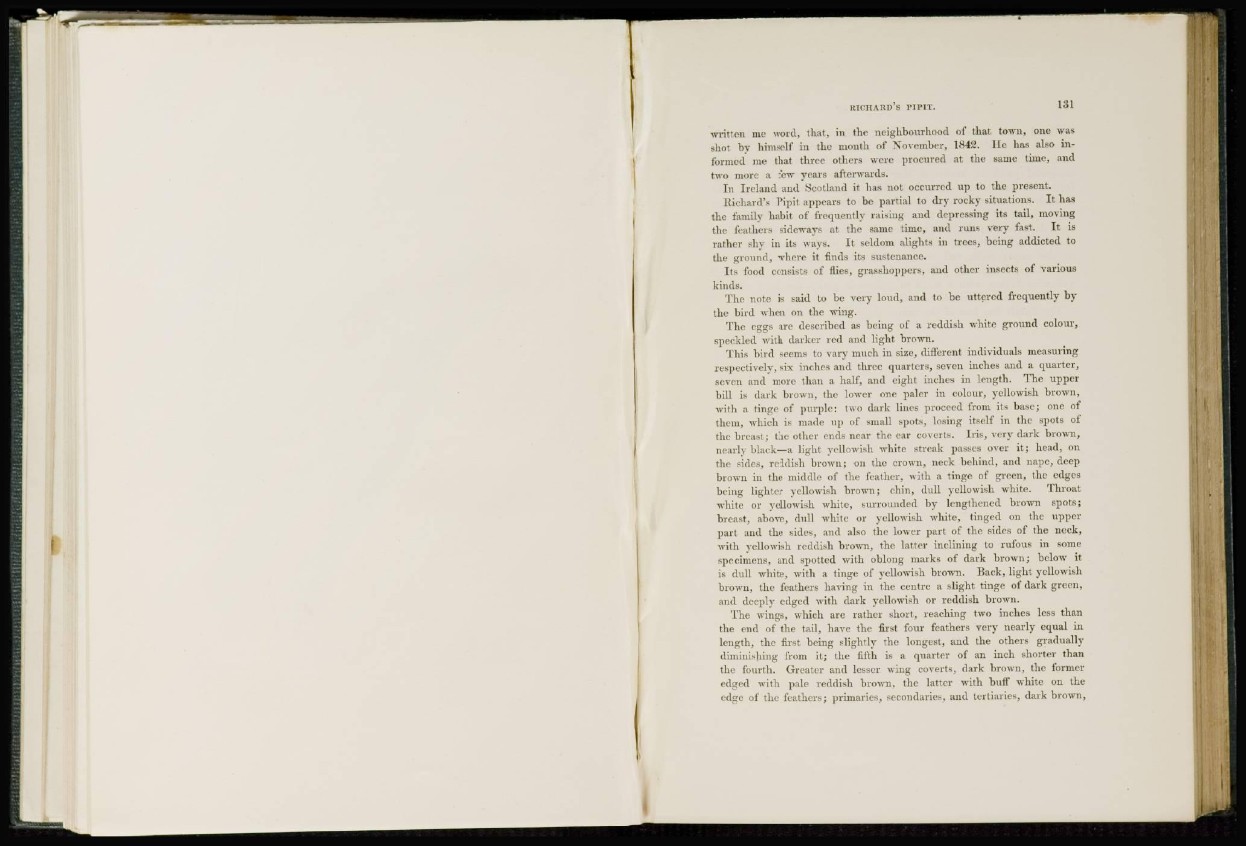
written me word, that, in the neighbourhood of that town, one was
shot by himself in the month of November, 1842. He has also informed
me that, three others were procured at the same time, and
two more a few years afterwards.
In Ireland and Scotland it has not occurred up to the present.
Richard's Pipit appears to be partial to dry rocky situations. It has
the family habit of frequently raising and depressing its tail, moving
the feathers sideways at the same time, and runs very fast. It is
rather shy in its ways. It seldom alights in trees, being addicted to
the ground, where it finds its sustenance.
Its food consists of flies, grasshoppers, and other insects of various
kinds.
The note is said to be very loud, and to be uttered frequently by
the bird when on the wing.
The eggs arc described as being of a reddish white ground colour,
speckled with darker red and light brown.
This bird seems to vary much in size, different individuals measuring
respectively, six inches and three quarters, seven inches and a quarter,
seven and more than a half, and eight inches in length. The upper
bill is dark brown, the lower one paler in colour, yellowish brown,
with a tinge of purple: two dark lines proceed from its base; one of
them, which is made up of small spots, losing itself in the spots of
the breast; the other ends near the ear coverts. Iris, very dark brown,
nearly black—a light yellowish white streak passes over it; head, on
the sides, reddish brown; on the crown, neck behind, and nape, deep
brown in the middle of the feather, with a tinge of green, the edges
being lighter yellowish brown; chin, dull yellowish white. Throat
white or yellowish white, surrounded by lengthened brown spots;
breast, above, dull white or yellowish white, tinged on the upper
part and the sides, and also the lower part of the sides of the neck,
with yellowish reddish brown, the latter inclining to rufous in some
specimens, and spotted with oblong marks of dark brown; below it
is dull white, with a tinge of yellowish brown. Back, light yellowish
brown, the feathers having in the centre a slight tinge of dark green,
and deeply edged with dark yellowish or reddish brown.
The wings, which are rather short, reaching two inches less than
the end of the tail, have the first four feathers very nearly equal in
length, the first being slightly the longest, and the others gradually
diminishing from it; the fifth is a quarter of an inch shorter than
the fourth. Greater and lesser wing coverts, dark brown, the former
edged with pale reddish brown, the latter with buff white on the
edge of the feathers; primaries, secondaries, and tertiaries, dark brown,